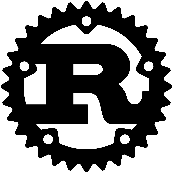
10 programming languages on the rise
Ready for something new? These are 10 programming languages on
the rise right now that can redefine your next project.
The podium of the most popular programming languages has been disputed for years between Python, JavaScript and Java. They compete fiercely and share the top 10 with programming languages such as C, C++, C#, PHP, SQL, TypeScript and HTML/CSS.
In some cases, these “giants” served as the basis for new programming languages. In others, a whole new language just pops up and takes the coding world by surprise. With some 9.000 programming languages created so far and between 700 – 2000 (depending on the source) in current use today, there is plenty to choose from depending on the use case and app.
What differentiates programming languages from each other?
Each programming language has its own syntax, keywords, and purpose that may not work with others or in different frameworks. But more generally, programming languages can be described by level and type.
- Low-level programming languages: a low-level language shows a low abstraction from the computer instruction architecture, which means it’s closer to machine language than human language. Examples of low-level programming languages (with varying levels of abstraction) are Fortran, C, Cobol, Assembly, and Basic.
- High-level programming languages: a high-level language has a stronger abstraction from the machine’s language and is closer to a human language. This means that its syntax includes words that humans can read and is then more intelligible. Examples of high-level programming languages are JavaScript, Python, C++, C#, or Java.
And now, the real question: what are currently the hottest trending programming languages?
10 programming languages on the rise
Get to know 10 of the programming languages that are on the rise right now.
Go
![]()
Go is an open-sourced high-level language created in 2009 by Google. It was built for speed, and is usually used for building web servers, data pipelines and machine-learning packages, as well as AI and data science processes. Go is used by companies like Dropbox, Google, SoundCloud and Twitch.
Swift

Apple developed the Swift programming language in 2010 and released it in 2014. With a concise syntax, Swift is used for iOS, iPadOS, macOS, tvOS, and watchOS. Uber, Glovo, Asana, and DoorDash all use Swift.
F#

F# – or F sharp – is gaining traction as competitor of Python, since it is an open-source, cross-platform, performance-driven programming language. F# was developed in 2005 by Microsoft and, just like Python, can be used for building and designing applications and games, for data science, scientific research, and also for AI. Walmart, Jet.com and Olo are some of the companies using F# in their stack.
Elixir

Elixir came about in 2012, as a programming language that runs on the Erlang Virtual Machine, BEAM. It was heavily influenced by Ruby on Rails, having been created exactly to address its shortcomings, and designed to handle large data volumes. Elixir is now on the rise, especially on the telco, eCommerce, and finance industries. PepsiCo, Spotify, WhatsApp and Discord are some of the giants using Elixir.
Kotlin

Kotlin is a general-purpose, object-oriented programming language created in 2011. Kotlin runs seamlessly on Java Virtual Machine and was designed to simplify Android application development. According to Google’s Android Studio, Kotlin is used by over 60% of Android developers. Besides mobile, Kotlin is also used for Virtual Reality and Augmented Reality applications. Pinterest, Trello and Amazon are some of the companies using Kotlin.
R

R is a programming language created in 1993 for statistical computing, graphics programming, and data analytics. It is used in a number of industries to visualize and analyze large volumes of data, like fintech, retail, and healthcare. Despite being a veteran, R’s popularity is increasing steadily, and there is a shortage of tech talent with expertise in R. Companies like Amazon, Google, and LinkedIn use R in their stacks.
Ruby

Ruby, developed in 1995 in Japan, is an interpreted, dynamic, open-source programming language with a diverse range of use cases. It is used for data-driven web applications, marketplaces, and desktop applications. Ruby is simple, productive and has elegant syntax, and is the basis for the popular web app framework Ruby on Rails that extends Ruby language. Some companies using Ruby are Airbnb, CouchSurfing, Shopify and Twitter.
Rust

Rust was created in 2020 by Firefox, to address some vulnerabilities of C++. It is a general-purpose, multi-paradigm programming language, with a focus on speed and security, able to handle substantial amounts of data. Being the true baby of this list, the learning curve of Rust may be a bit steeper than other programming languages. Companies like Dropbox, Firefox, Cloudflare, and more recently Meta, Amazon, or Microsoft utilise Rust for diverse operations where speed, security and scalability are needed.
Dart

Dart has been around since 2011, thanks to Google. Dart is used to develop web, mobile, server and desktop applications, and has lately been very popular in IoT applications as well. Dart has C-like syntax and compiles to machine code, JavaScript, or WebAssembly. Dart is used by Groupon and eBay, among others.
Julia

Julia programming language was created in 2011, but its popularity has taken off in recent years. Julia is a high-level, general purpose, dynamic programming language, and – depending on who you ask – is a strong contender for Python’s title. Julia can work with or be compiled to other languages, such as C, Python, R, Rust, C++, SQL, and JavaScript. Programmers who use Julia swear it combines C’s speed, Python’s intuitiveness, and R’s statistical power.
A Partner for your next endeavour: leave the programming to us
At Near Partner, we find creative and effective solutions for our customers, handle complex development needs, and help companies stay competitive and innovative. We are problem solvers, and every challenge is an opportunity for our team of coding rockstars.
Not sure how we can help you? Get in touch with us and let’s brainstorm, or head over to our project cost simulator.
Are you a developer with an ambition, desire to learn, and with no fear of taking on challenges? Maybe your place is with us, at Near Partner! See our open opportunities or send a spontaneous application!




